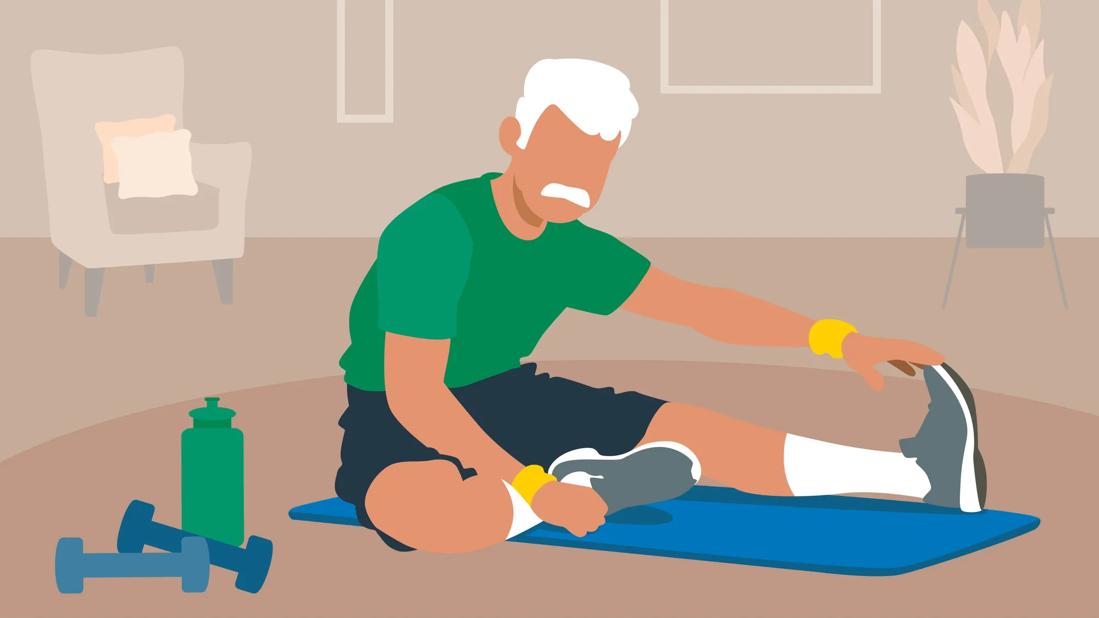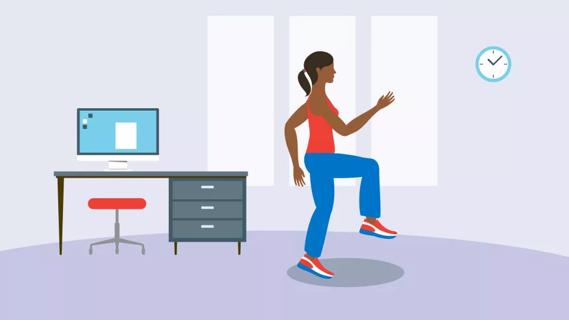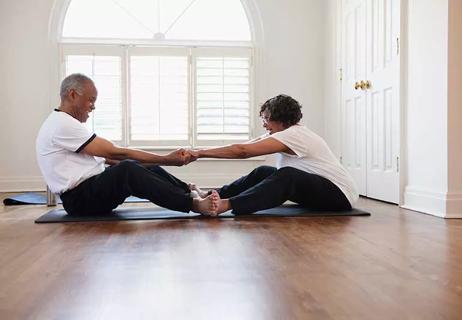Shoulder rolls, hamstring stretches and calf exercises can all improve flexibility and endurance

Stretching is a simple way to prepare your muscles and joints for any workout. But it’s not just for warming up. Stretching is great between exercises and as part of your cool-down routine, too. It’s also an effective way to maximize active recovery days.
Advertisement
Cleveland Clinic is a non-profit academic medical center. Advertising on our site helps support our mission. We do not endorse non-Cleveland Clinic products or services. Policy
Sports medicine specialist Lauren Wichman, MD, shares how stretching can benefit you and provides a 15-minute full-body stretch routine.
Stretching has several benefits. For starters, it helps prevent falls and injuries by warming up muscles, joints and connective tissues. Whether you do an entire stretching routine on its own or you stretch before and after exercising, it can also help improve:
“Stretching can be very helpful for sports performance,” says Dr. Wichman. “But it can also be helpful for everyday activities, like climbing stairs, changing directions and standing up from a chair.”
When it comes to stretching, there are different types:
Static and dynamic stretches can be:
Advertisement
Stretching works best when you have the time and availability, so don’t rush through it. If you’re creating a stretching routine, Dr. Wichman suggests starting with a few different stretches for a total of 10 to 15 minutes.
“You’ll likely find stretching is beneficial over time,” she says. “It may take a few weeks before you notice subtle benefits and then months before you notice bigger changes in your range of motion and flexibility.” So, keep at it for maximum effect.
For a 10-minute stretching routine, Dr. Wichman suggests starting with some basic stretches like the following upper- and lower-body exercises.
Advertisement
Advertisement
“Stretching is something everyone can do, no matter your age or fitness level,” encourages Dr. Wichman. “Whether you’re starting your day, taking a break at work or cooling down after exercise, stretching helps keep your body flexible, balanced and ready for any activity.”
Advertisement
Learn more about our editorial process.
Advertisement

This satisfying, involuntary act of yawning and stretching helps release tight muscles

While one focuses on stretching through movement, the other requires holding poses for 30 to 90 seconds — both can have a place in your fitness routine

Stretch before and after your workouts for maximum benefits, but your pre-workout stretches should be different from your post-workout stretches

Counteract psoas muscle stiffness and soreness with stretches that lengthen and strengthen

Having a partner help you stretch can prevent injury and lead to an increased range of motion

Simply contracting certain muscles provides a good stretch to other areas of your body

Relax into this form of stretching while a prop or partner assists you

Reduce pain and stiffness by stretching your body throughout the day

Babies can get congested easily, but you can calm their cough by keeping them hydrated, using nasal drops and running a humidifier

Weight loss may cause loose, sagging skin and muscle loss to your rear

Several conditions, like vitiligo and fungal infection, can cause a loss of pigmentation, leading to white spots or patches on your skin